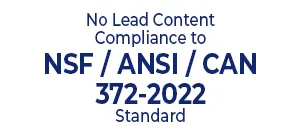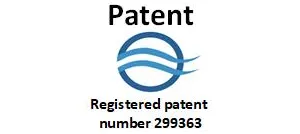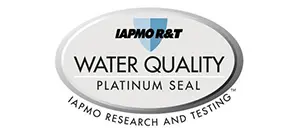A Smarter Alternative with TipaTech’s LotusDY
Reverse osmosis (RO) is widely regarded as one of the most thorough water purification technologies available today. But while it effectively reduces many contaminants, it also removes something vital—essential minerals your body depends on, including magnesium, calcium, and potassium.
This issue has created a growing interest in remineralization—the process of restoring minerals to RO water. But as we’ll explore, the better long-term solution may not be to treat the symptoms of over-filtration, but to avoid them entirely with a more intelligent, balanced approach to purification.
Enter TipaTech’s LotusDY: a patented under-sink water purifier that filters ultra-fine contaminants without compromising your water’s natural mineral profile. It’s a next-generation system built on science, health, and sustainability—delivering water that’s not just clean, but complete.
What Is Remineralization—and Why Is It Needed?
When water passes through a reverse osmosis membrane, it is stripped of nearly all dissolved substances. While this includes contaminants like lead, arsenic, and PFAS, it also eliminates naturally occurring minerals that support metabolic function, cardiovascular health, and hydration.
RO-treated water is typically:
- Extremely low in Total Dissolved Solids (TDS)
- Acidic in pH
- Lacking in electrolytes and trace minerals
- Flat in taste
- Potentially corrosive to plumbing
According to the World Health Organization, long-term consumption of demineralized water may be associated with increased risk of cardiovascular disease, fatigue, and certain nutrient deficiencies. It may also reduce the protective benefits of water in the gastrointestinal tract (WHO, 2005).
Four Common Methods to Remineralize RO Water
Many households using RO systems attempt to add minerals back into their water through one of the following methods:
- Post-RO Mineral Cartridges
These cartridges are installed downstream of the RO unit and release minerals such as calcium and magnesium carbonate into the water flow. While relatively easy to install, they often require frequent replacement and may not offer precise control over mineral levels.
- Liquid Mineral Drops or Electrolyte Solutions
These supplements are manually added to each glass or pitcher of water. Although they offer some flexibility, they can be inconsistent, costly over time, and easy to forget or misuse.
- Mineral Stones or Beads
Placed in water pitchers or filters, mineral stones slowly release trace elements into the water. However, they tend to remineralize slowly and cannot guarantee a consistent mineral concentration.
- Mixing with Unfiltered Tap Water
Some consumers attempt to “dilute” RO water with untreated tap water to restore minerals. This method undermines the entire point of purification, reintroducing contaminants alongside minerals.
A 2022 study published in Environmental Research and Public Health concluded that these methods vary in effectiveness and rarely restore water potential (ORP) to its original mineral profile (Nayak et al., 2022).
TipaTech’s LotusDY: A Smarter Alternative to RO and Remineralization
Rather than removing everything from water and trying to rebuild it afterward, TipaTech’s LotusDY under-sink system takes a more holistic approach:
- Ultra-fine filtration to 0.007 microns, capturing viruses, bacteria, and microplastics—more precise than typical RO systems.
- Preservation of essential minerals, such as calcium and magnesium, that support bone strength, muscle function, and hydration.
- User-adjustable mineral calibration via a patented TDS control button—unique to TipaTech—allowing users to fine-tune mineral balance to their preference or dietary need.
- Magnesium addition capability, offering targeted health support for cardiovascular, digestive, and neuromuscular systems.
- Gas-release mechanism that eliminates undissolved gases such as hydrogen sulfide, radon, and chlorine—issues often retained in pressurized RO storage tanks.
- No electricity or water waste, making LotusDY not only healthier but also more environmentally responsible.
This approach allows LotusDY to provide water that is clean, balanced, and alive—without the secondary hassle of remineralizing it after treatment.
As TipaTech puts it:
“Reverse osmosis forces you to fix water after it’s been stripped bare. Our technology ensures you never lose what matters in the first place.”
Why Minerals in Drinking Water Matter
Minerals in water are bioavailable—meaning the body can absorb them more efficiently than from supplements. Drinking water may account for up to 20% of daily magnesium and calcium intake in regions with mineral-rich supplies.
A 2021 review in Nutrients highlighted the importance of drinking water as a contributor to overall mineral intake. The authors noted correlations between low magnesium levels in water and increased risk of hypertension and sudden cardiac death, especially in individuals consuming demineralized water over long periods (Rosborg et al., 2021).
Maintaining mineral integrity in filtered water is not just about taste—it’s about supporting long-term wellness.
Conclusion: Prevention Is Better Than Correction
Remineralizing RO water is possible—but often inefficient, inconsistent, and an extra step that many homeowners forget or avoid. It adds cost, complexity, and still doesn’t address other problems like water waste or energy use.
LotusDY provides a complete solution from the start:
a filtration system that achieves the purity of RO without the nutritional or operational drawbacks.
- No mineral loss
- No waste
- No power consumption
- Fully certified and patented
- And water that actually supports your health
When it comes to home water purification, TipaTech’s philosophy is simple:
Don’t strip water of its life-giving elements. Filter smarter. Keep what matters.
References:
- World Health Organization – Nutrients in Drinking Water
Long-standing expert report highlighting the potential health risks of consuming demineralized water and emphasizing the importance of optimal mineral content in drinking water.
🔗 [Nutrients in Drinking Water – WHO, 2005 (PDF)] researchgate.net+15iris.who.int+15bfr.bund.de+15iris.who.int+6bfr.bund.de+6researchgate.net+6 - Nayak et al. – Post-Treatment Options for Demineralized Water
A peer-reviewed 2022 study in the International Journal of Environmental Research and Public Health evaluating the effectiveness—and limitations—of commercial remineralization methods following reverse osmosis.
🔗 [IJEHP Journal Homepage – MDPI] - Rosborg, Kozisek & Giménez – Calcium and Magnesium in Drinking Water
A 2009 WHO meeting report examining the public health significance of calcium and magnesium in water, covering epidemiology, bioavailability, and regulatory guidance.
🔗 [Calcium and Magnesium in Drinking‑Water – WHO, 2009] researchgate.net+12who.int+12bfr.bund.de+12












